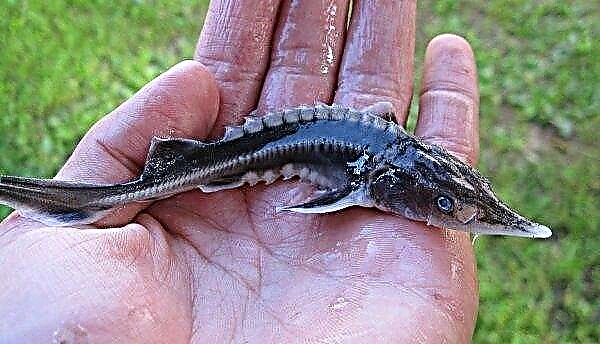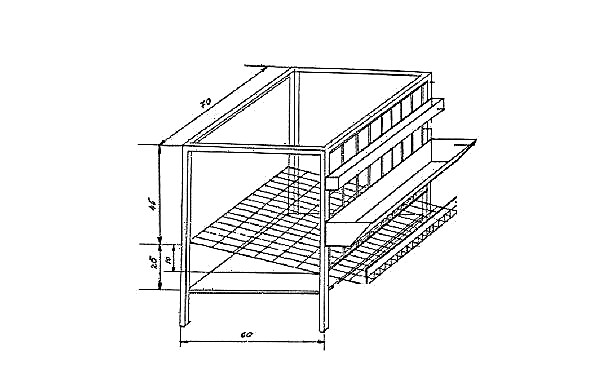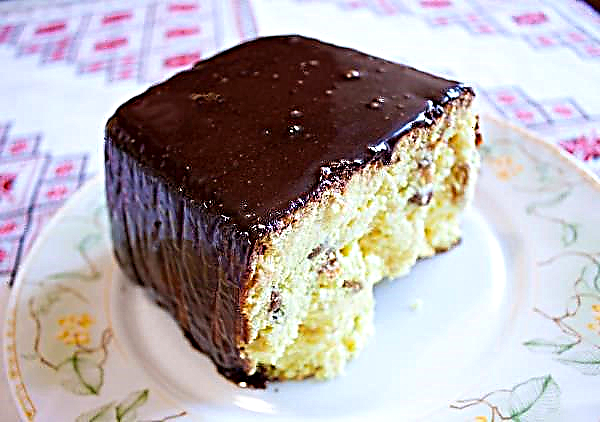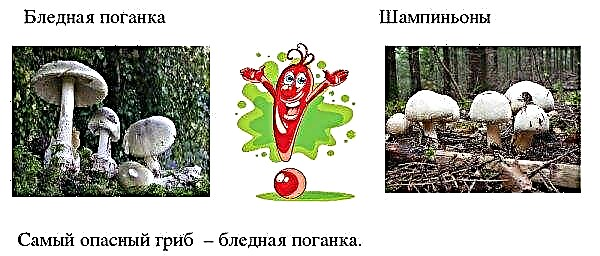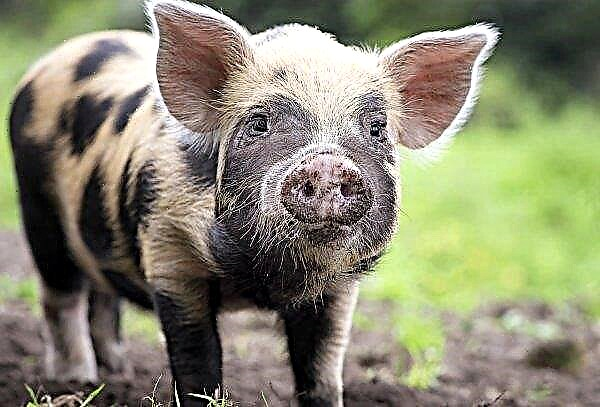Modern landscape design is a very difficult task. Not every gardener can make his flowerbed attractive and aesthetic. If you plant a variety of thuja Smaragd on the site, you can seem like a connoisseur in this area. The article will consider all the features of the western variety, the rules for planting and care.
Grade description
Before proceeding with the cultivation of a particular arborvitae, it is necessary to study its description. This will help you understand whether this plant is suitable for you or not.
Important! The frost resistance of the variety is high, in winter it can survive a cold snap to -40 ° C. Also, the western thuja Smaragd is characterized by resistance to spring frosts, which can cause more damage to the plant compared to winter.
Characteristics of western thuja varieties Smaragd:
- Adult shrubs grow to a maximum height of 6 m. Width about 2 m.
- The tree has a columnar crown.
- The needles are dark green in color, and remain so throughout the year.
- The life expectancy of the plant is from 110 to 130 years.
- Annual growth is 20 cm in height and 4 cm in width.
- The needles have a length of not more than 5 cm.
- Flowering is carried out using long brown cones, which fall with the onset of autumn. Their length is about 4 cm, and the diameter is within 2-3 cm.
Varieties
Such varieties of western thuja Smaragd are often sold:
Use in landscape design
Thuya Smaragd is successfully used to decorate rockeries. She can also complement the alleys in the garden. Given the growth rate of the shrub, it can be planted as a hedge. Evergreen decorative needles will look beautiful on flower beds in winter.
Did you know? Native Americans used thuja needles to prepare tinctures that help with headaches. This is due to the fact that it contains a lot of vitamin C.
In horticulture, western arborvitae are often used to create shade in recreation areas. This variety combines well with other conifers, especially with black pine. Many people prefer to plant this species with colorful flowers: barberry, magnolia, cinquefoil, weigel and spirea.
Breeding
There are several basic methods by which you can propagate the thawed varieties of Smaragd. Most often, this culture is planted with cuttings. If you carry out breeding with seeds, you can grow many healthy seedlings that have strong endurance in relation to negative environmental factors. The only drawback of such breeding is that varietal characteristics are not preserved.
Seed cultivation
You can buy seeds at the store or collect them yourself. Harvest them at the end of summer. Only those cones that have already been fully opened are used to collect. Thuja fruits should be stored in a clean, dry and well-ventilated area until they are fully opened. The optimum temperature for storing cones is from + 5 ° C to + 7 ° C. Try not to lay out planting material in direct sunlight, since germination will be lost and you can not use it for planting.
To collect seeds that are ripe, you need to knock on the cone and they will spill out. Place paper or fabric underneath to prevent loss of planting material. Pre seeds need to be hardened. To do this, they are laid out in a container with sand. After it is placed on the lower shelf of the refrigerator and kept for 3 months. Sowing is started in late winter or early spring, when the soil temperature reaches + 10 ° C.
 The technology of planting seeds is as follows:
The technology of planting seeds is as follows:
- Pour nutrient soil (peat, sand and earth in a 1: 1: 2 ratio) into the container.
- Pour the soil with potassium permanganate (2 g per 5 l of water).
- Sow the seeds into holes 5 mm deep. The distance between them should be 5 cm.
- Fill the recesses with soil and level it.
- Store the container in a warm place where the temperature is around + 20 ° C.
- Cover the box with plastic wrap to speed up germination.
- After 3 weeks, when the shoots appear, the shelter can be removed.
- Transplanting to a permanent place is carried out when the height of the seedling is at least 60 cm.
Video: thuja from seeds
Cuttings
If you decide to cut the western thuja, it is best to do this in the spring.
To create a stalk, you must perform the following steps:
- Cut several branches from a healthy tree. Their length should be 10-12 cm.
- At an angle of 45 °, divide the branches into shoots, 5 cm long.
- At the base, you need to trim the bark and existing leaves.
- Place the slice in clean water.
- With the advent of the first roots, you need to prepare the ground. To do this, mix vermiculite, peat and sand in equal proportions.
- Pour the mixture into the container and compact it.
- Using a napkin, remove excess fluid from the stalk.
- Place the shoot in the soil and tamp so that the root is not exposed.
- Pour with warm water.

Landing
If you study in advance all the basic rules for planting the western thuja Smaragd, you can understand that everything is not as complicated as it might seem at first glance.
Did you know? In the days of the ancient Greeks, thuja was used for sacrificial burns. Therefore, the name of the tree translates as “incense”.
The most basic preparatory steps are as follows:
- pick up healthy quality seedlings;
- select cuttings if you will use planting material prepared independently;
- choose the best place to land.

Landing rules
You need to start landing at the end of spring, best of all in May. If you plant seedlings in the fall, then they may not have time to grow stronger and die after severe frosts. Smaragdian thuja is unpretentious to the soil and quickly develops in any kind of soil. Therefore, planting is carried out on loamy, clay, sandy lands or chernozems.
The main rule is to make a drain so that moisture does not stagnate in the soil, which negatively affects the development of the root system and can provoke rot. You need to plant the plant in sunny garden areas so that the crown is bright enough. It can also develop in the shade, only growth slows down.
Important! When landing, consider the optimum distance. The interval between the bushes should be 50-100 cm.
When choosing planting material, consider the following features:
- absence of cracks or spots (they indicate that the seedlings are unsuitable for planting);
- optimal age - 1-2 years;
- height - no more than 70 cm;
- developed root system.
Step-by-step instruction
Planting is carried out using step-by-step instructions to take care of the survival and development of the tree:
- Prepare a landing hole measuring 90 × 80 cm.
- At the bottom, arrange a 15-centimeter layer of drainage. For these purposes, use broken stone or gravel.
- Prepare the nutrient mixture that you need to fill the seedling. Mix the turf soil, sand and peat in equal proportions.
- Pour 10 liters of water into the hole and wait until it is absorbed.
- Place a seedling inside, and strengthen the roots with moist soil.
- Sprinkle with prepared soil mixture.
- Tamp it and pour 20 liters of water.

Care
Plants must be properly looked after. The development and beauty of the appearance of the shrub depends on how much time the gardener will devote attention to them. Watering and feeding this one should be done at a certain interval so that the development of the roots is not disturbed.
Do not forget about loosening the soil and cutting, so that the thuja feels comfortable. You need to cut with a sharp secateurs or scissors. If you do not properly carry out any care procedures, then the plant will live 50-60 years less.
After landing
During the first month, water the planted shrubs with an interval of 7 days. Under each plant pour 10 liters of water. The soil should be moistened to a depth of 30 cm. If you live in regions where there is constant drought, then watering is carried out 2 times a week. You need to pour 20 liters of water under each bush. Weekly irrigate the crown with a spray to remove dust, dirt and improve the development of needles. This procedure is best done in the morning or in the evening, so that under the influence of sunlight there will be no burns on the plant.
You need to pour 20 liters of water under each bush. Weekly irrigate the crown with a spray to remove dust, dirt and improve the development of needles. This procedure is best done in the morning or in the evening, so that under the influence of sunlight there will be no burns on the plant.
Watering and fertilizer
A month after planting, you can reduce watering, because the thuja has already taken root. In summer, the culture is watered every 10 days, and in spring and autumn, you can increase the interval to 2 weeks. A long lack of moisture provokes dry needles and a deterioration in the appearance of the plant. Irrigate the crown to flush pests.
Top dressing is applied 2 times per season:
- in spring using potassium nitrate (50 g per 10 liters of water). The entire volume is poured under 1 bush;
- in the fall apply superphosphate (100 g per 10 l of water). Distribute the resulting solution to 1 plant.
You can also use the Fertika complex mineral fertilizer (100 g per 10 liters of water). Make the entire volume of the solution per 1 r of the barrel. It is used only in the autumn period.
Video: how to fertilize thuja
Pruning
The thuja cultivar Smaragd does not need to form a crown. Therefore, it is recommended to carry out only sanitary haircuts. You need to remove diseased and dry branches in the spring, before the sap flow in the trunk begins. In summer and autumn, it is not recommended to cut the shoots, because a weakened plant will not be able to survive severe frosts.
Loosening
Soil needs to be loosened regularly. This allows you to remove the crust on the surface of the soil, which prevents the penetration of nutrients and moisture into the earth. It is recommended to carry out the procedure before each watering and fertilizing. Loosen the soil to a depth of 10 cm. This allows you to remove the upper dense layer of soil and not damage the root system.
Winter preparations
It is only necessary to cover the plant before frosts for the first 2 years after planting. The shelter should be made of light or transparent materials so that the photosynthesis process is not disturbed. The trunk circle is covered with a layer of mulch. To do this, you can use fallen foliage or peat. Adult plants that do not need shelter are only pulled together with a tourniquet. This is necessary so that, under the weight of the snow, the branches of the columnar shrub do not break.
Video: preparing thuja for winter
Diseases, pests and their control
Western thuja cultivar Smaragd is often affected by fungal infections. Their symptoms are yellowing and shedding of needles. Fundazol helps to fight them (20 g per 10 l of water). Among pests, thuja aphids and false shields should be noted. Against the first parasite, Karbofos (40 g per 5 l of water) is used. In the fight against false shields, “Rogor” is used (30 g per 5 l of water).
All sprayings against diseases and pests are carried out with an interval of 2 weeks until the symptoms of the lesion are completely eliminated. So, now you know that growing western thuja varieties Smaragd is not as difficult as it might seem. If you plant and care for shrubs correctly, you can grow beautiful plants in a few years that will decorate your flower bed at any time of the year.

